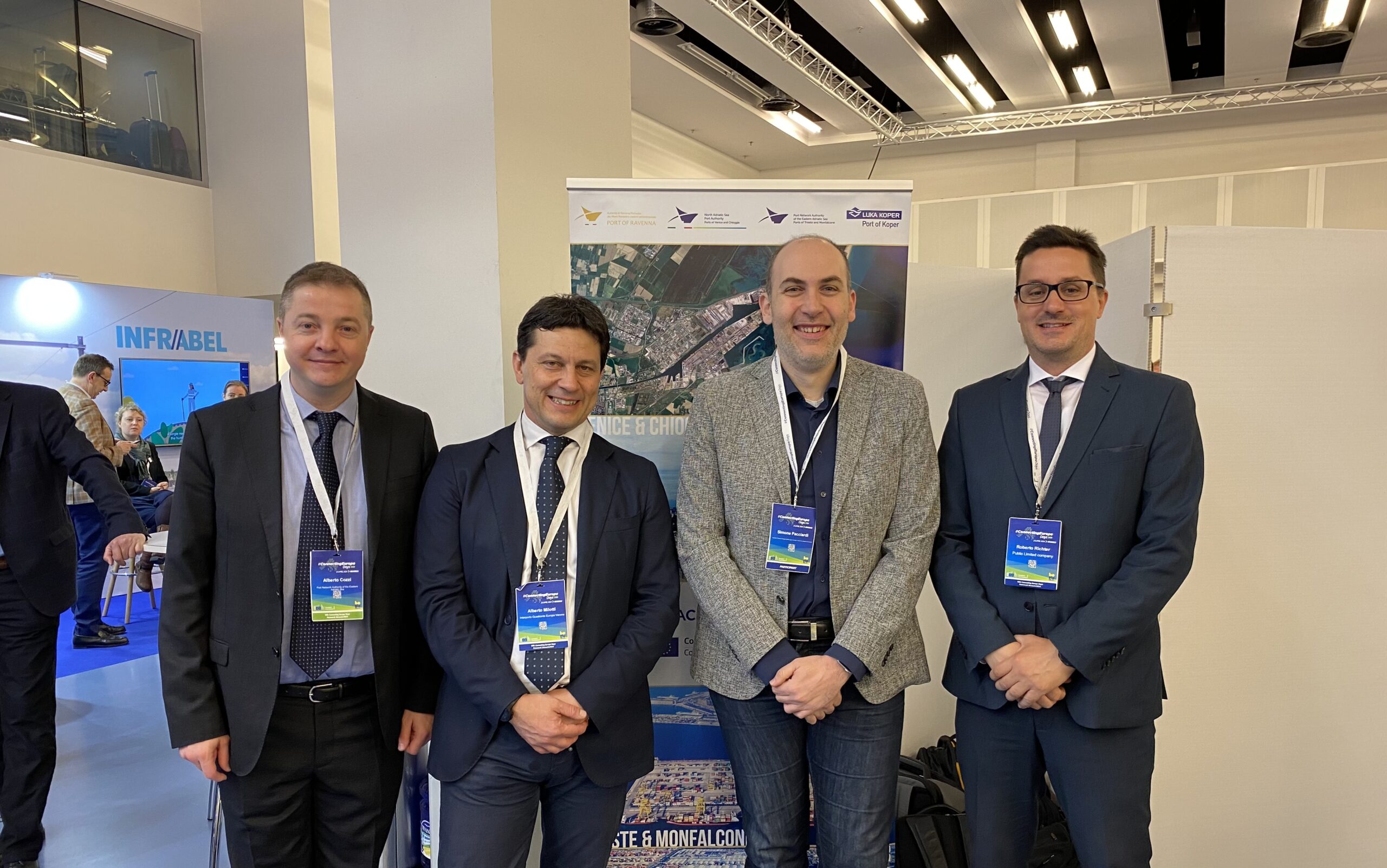Project overview
Improving ACCESSibility of last MILE connections of rural and peripheral regions to main TEN-T nodes in Central Europe through ICT
The trans-European transport networks carry a large share of long-distance freight transport across Europe. But connections between the main nodes of these networks and rural or peripheral regions are rather weak, with negative consequences for transport operators. The ACCESSMILE project improves the accessibility of such regions with the networks. To this end, the partners pilot new strategies and action plans to optimise IT processes related to transport flows, gates and cargo bundling.
-
2,03m €
-
Project Budget
-
80%
-
of the Budget is funded by ERDF
-
6
-
Countries
-
9
-
Regions
-
10
-
Partners
-
3
-
Pilots
Duration
Start date
End date
Project progress
Project partnership
Project partners

Lead partner
Port Network Authority of the Eastern Adriatic Sea
Special projects unit
Project partner
Total partner budget
181,280 €
Special Projects and Innovation Unit
Total partner budget
204,620 €
Strategic Development Department
Total partner budget
200,300 €
Total partner budget
183,400 €
Total partner budget
191,440 €
Total partner budget
202,050 €
Total partner budget
184,300 €
Total partner budget
204,100 €
Total partner budget
184,600 €
Roadmap
News
Events
Pilot actions
Outputs

DCIM100MEDIADJI_0819.JPG
Strategy for improving the last mile accessibility of rural and peripheral areas to TEN-Ts through ICT Deliverable no. D.1.1.2
Activity 1.1 is devoted to jointly assessing the current situation on last mile accessibility of rural and peripheral area in CE to the main freight nodes of TEN-T networks and elaborating a transnational strategy to improve it.
As a first step, PPs analyse the status quo in this domain by assessing bottlenecks and market potential, including currently applied ICT tools.
PP8-RSOE investigates good practices in the European and international context and carries out a comparative benchmarking study, assessing regions against each other, identifying which best practice could feed further project activities in a work paper.
Following that, PPs jointly draft a strategy setting a vision, objectives and priorities aimed at the optimisation of transport flows and reduction of environmental externalities through IT tools, covering the
three domains of:
1. Vehicle Booking Systems/pre-arrival or pre-exit notification, port/terminal gates;
2. Port/terminal gates and interoperability among public/private IT systems;
3. Cargo bundling
Aim of this document is to provide PPs with a common template as to co-design Deliverable D.1.1.2 “Strategy for improving the last mile accessibility of rural/peripheral areas to TEN-Ts through ICT”.
Type of output: Strategies and action plans

Action plan for improving the last mile accessibility of CE rural/peripheral areas to TEN-Ts through traffic management IT tools and VBS - Deliverable no. D.1.2.3 – output no. 1.3
Activity 1.1 is devoted to jointly planning the improvement of accessibility of rural and peripheral areas to TEN-T nodes through IT tools, covering the three domains of:
1. Vehicle Booking Systems/pre-arrival or pre-exit notification, port/terminal gates;
2. Port/terminal gates and interoperability among public/private IT systems;
3. Cargo bundling
Aim of this document is to provide PPs with a common template as to co-design Deliverable D.1.2.3 “Action Plan for improving the last mile accessibility of rural/peripheral areas to TEN-Ts through ICT”.
Type of output: Strategies and action plans

Action plan for improving the last mile accessibility of CE rural/peripheral areas to TEN-Ts by enhancing port/terminal gates and entry/exit IT tools and procedures Deliverable no. D.1.3.3 – output no. 1.4
Activity 1.1 is devoted to jointly planning the improvement of accessibility of rural and peripheral areas to TEN-T nodes through IT tools, covering the three domains of:
1. Vehicle Booking Systems/pre-arrival or pre-exit notification, port/terminal gates;
2. Port/terminal gates and interoperability among public/private IT systems;
3. Cargo bundling
Through this document, drafted by PP2-ZAILOG, PP3-Port of La Spezia (Italy), PP4-Luka Koper (Slovenia), PP8-RSOE (Hungary) and PP9-BCT (Poland) jointly break down the goals of the transnational Strategy for improving the last mile accessibility of rural/peripheral areas to TEN-Ts through ICT (deliverable D.1.1.2) in an action plan for optimising last mile accessibility of CE rural and peripheral areas by improving port/terminal gates and entry/exit IT tools and procedures, with specific tasks for each PP, KPIs, time line, financial resources needed.
Type of output: Strategies and action plans

Action plan for improving the last mile accessibility of CE rural/peripheral areas to TEN-Ts by adopting cargo bundling and tracking IT tools Deliverable no. D.1.4.3 – output 1.5
WP1 is devoted to jointly planning the improvement of accessibility of rural and peripheral areas to TEN-T nodes through IT tools, covering the three domains of:
1. Vehicle Booking Systems/pre-arrival or pre-exit notification, port/terminal gates;
2. Port/terminal gates and interoperability among public/private IT systems;
3. Cargo bundling
This action plan, jointly drafted by PP6-LCAS (Austria), PP10-GRUBER (Poland) and PP11-ROSTOCK (Germany), breaks down the goals of the transnational Strategy for improving the last mile accessibility of rural/peripheral areas to TEN-Ts through ICT (deliverable D.1.1.2) in an action plan for optimising last mile accessibility of CE rural and peripheral areas by adopting cargo bundling and tracking IT tools, with specific tasks for each PP, KPIs, time line, financial resources needed.
Type of output: Strategies and action plans

Solutions topic1: transport flow management and VBS - output 3.1
Led by PP7, LP (IT), PP5 (HR) and PP7 (HU) jointly co-design the solutions derived from the pilot action’s outcomes achieved in each site, focusing on IT tools applied to VBS and transport flow management, including indications of the actions needed for them to be taken up or up-scaled.
Type of output: Strategies and action plans
In development

Solutions topic2: gates & entry/exit tools and procedures - output 3.2
Led by PP2, PP2, PP3 (IT), PP4 (SI), PP8 (HU) and PP9 (PL) jointly co-design the solutions derived from the pilot action’s outcomes achieved in each site, focusing on gates and entry/exit IT tools and
procedures, including indications of the actions needed for them to be taken up or up-scaled.
Type of output: Strategies and action plans
In development

Solutions topic3: cargo bunding and tracking - output 3.3
Led by PP10, PP6 (AT), PP10 (PL) and PP11 (DE) jointly co-design the solutions derived from the pilot action’s outcomes achieved in each site, focusing on cargo bundling and tracking IT tools, including indications of the actions needed for them to be taken up or up-scaled
Type of output: Strategies and action plans
In development

Organisations cooperating across borders - output 3.4
PPs sign an MoU taking up all the project's results and agreeing to continue cooperation after the project’s end not only on the improvement of the accessibility of peripheral and rural areas to the
main TEN-T nodes through ICT, but also on additional topics, such as cybersecurity This output refers to the number of PPs cooperating
in the project.
Type of output: Strategies and action plans
In development
Project videos
Project documents
Newsletters
Newsletter #1 ACCESSMILE September 2023
Newsletter September 2023
Newsletter #2 ACCESSMILE March 2024
Newsletter March 2024
Newsletter #3 ACCESSMILE September 2024
Newsletter September 2024
Brochure
1 ACCESSMILE A4
Brochure Accessmile
ACCESSMILE
The project lead partner is responsible for the content of this project website.
Project on social media
Project Contacts
Communication Manager
Simone Pacciardi
Phone: 00390187546377















